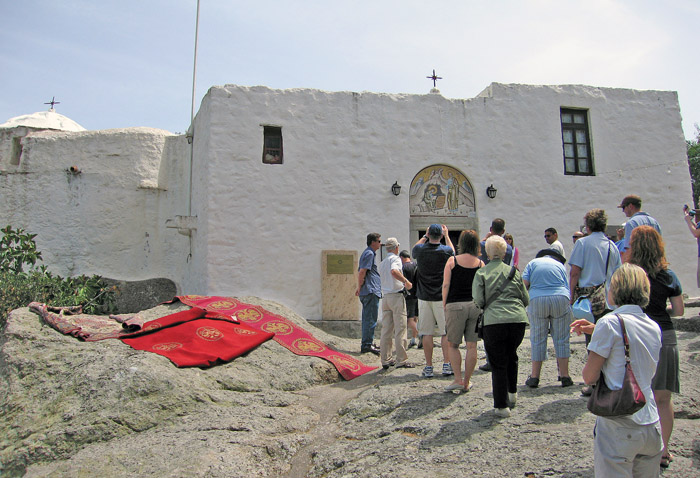HIS 135
Unit 1: Introduction

This is the entrance to the Cave of the Apocalypse on the Greek Island of Patmos. It was here in circa 100 ce that St. John the Divine--by Catholic tradition this was the same person St. John the Apostle one of the original apostles--experienced his visions that were later recorded by his followers. These revelations about the dramatic, and bloody, future end of the world later became the last book of the New Testament of the Christian Bible; photo courtesy Daniel Tinsley
 What you
must do in this unit
What you
must do in this unit
- Familiarize yourself with the textbook and read the textbook's Preface and Chapter 1. Note that if you are using a textbook other than Keylor--and I do not really have a problem with that--then you will have to figure out the specific reading that you will need to do for the different units in the course. If you are using the Brower etext, then you should read Chapter 1.
- Read the introduction letter from Professor Evans
- Review the entire course
website including the required assignments and your applicable important course dates
- Read the information on the course Explanation of Assignments and Grading. Pay particular attention to the Personal Choice Assignment. This is very important.
- Take appropriate action now if you will need proctored
examinations.
- Take the Course Introduction Check quiz. Log into Blackboard and you will see the button for the quiz in your course. This is a short, 10-question orientation quiz that you must take and pass with a score of 9/10 before you can continue in the course. If you must, you can re-take the quiz more than once. The quiz is also worth 10 points of extra credit.
- Submit the Introduction paragraph and your current events paper selection.
What you should do in this unit
What you
can do in this unit
Extra Credit Options
- For 25 points of extra credit, review this
entire course website, check the online ELI
student orientation and send your instructor any questions that you might have. This must be done in units 1 or 2 of the course to receive credit.
- You can also earn extra credit at any
time by (a)
finding a typo, spelling error or broken link (and sending me that information) or (b)
finding any website or web materials
that are relevant to this course. (Send the title of the site, the url and a
brief explanation why you find the information interesting and applicable to the course.)
- Other opportunities for extra credit?
- Suggest an assignment for use somewhere in the course. Be creative!
|

